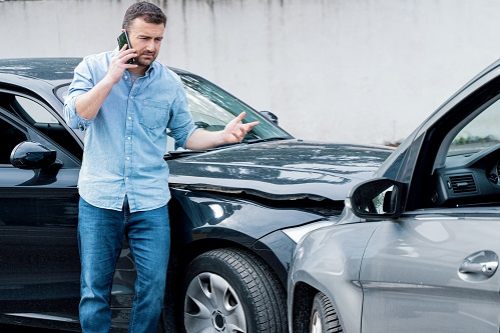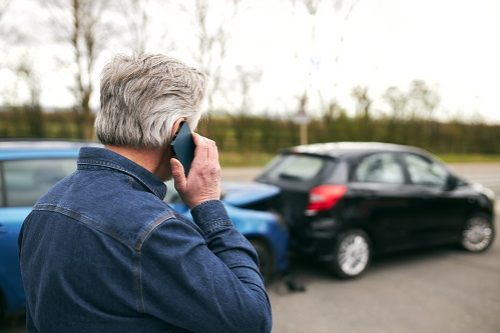Should you buy gap insurance? Our expert advice
We recommend buying gap insurance if:
- You've financed or leased your vehicle with a long loan or lease term likely to leave you upside down for a while
- You made a small down payment or no down payment on your vehicle, increasing the risk of owing more than it's worth in the event of a total loss
- You're concerned about covering the gap between your car's depreciated value and the amount you owe on your loan or lease
You don't need to buy gap insurance if:
- You own your vehicle outright (have no loan or lease or have paid it off)
- You have the financial ability to handle the difference between the loan and lease if necessary
- You made a large down payment and are unlikely to owe more than the vehicle is worth in the event of a total loss
What is gap insurance?
Gap insurance is a type of car insurance that covers the difference between your auto loan balance and the car's actual cash value in the event of a total loss.
It's common for consumers to buy cars with little or no down payment and then drive off in a vehicle already worth less than what they owe when it leaves the lot. Even with a down payment, depreciationDepreciation is the decrease in your car's value over time due to wear and tear, age and mileage. Depreciation is used to determine the actual cash value of a vehicle in the event of a total loss. happens fast, so being upside down is not unusual. If your car is totaled, your comprehensive or collision insurance reimbursement is based on the vehicle's actual cash value, not your loan balance. You're responsible for the difference if the actual cash value is below the loan balance.
However, gap insurance will cover the difference.
Gap insurance, which some say stands for guaranteed asset protection, kicks in when your car is stolen and not recovered or is totaled in an accident. You'll need to have full coverage on your policy to have gap insurance.
How does gap insurance work?
Here's a look at how gap insurance works, illustrated with the example of a driver we'll call Jasmine:
- Jasmine bought a new car in 2023. Her purchase price was $40,000, and she put down $2,000, leaving a loan amount of $38,000.
- Concerned about the likelihood that she will be upside down on the car in a few years due to depreciation and her smaller down payment. She buys gap insurance.
- In early 2025, Jasmine's car is struck and pushed into a median, sustaining serious damage. Thankfully, no one is hurt, but Jasmine's car is a total loss.
- Jasmine's insurance company tells her that her car's actual cash value is $30,000. However, she still owes $34,000 on her loan.
- Jasmine files a gap insurance claim for the $4,000 difference between what she owes and the insurance settlement, covering the extra amount that she would otherwise have to pay out of pocket.
- Jasmine pays only her $500 deductible.
Note: Gap insurance may cover your deductibleThe deductible is the amount you pay out of pocket for a covered loss when you file a claim., but not always; this often remains an out-of-pocket expense.
Gap insurance applies when your car is declared a total loss, either in a collision or comprehensive (non-collision) claimAn insurance claim is a request you make to your insurance company for coverage after your car is damaged or you have an accident. You can file a claim online, by phone, or in writing..
How much does gap insurance cost?
The average cost of gap insurance ranges from $24 to $168 a year when purchased from a car insurance company. The cost of gap insurance depends on a few factors:
- The make and model of your vehicle
- The value of your vehicle
- Where you live
- Where you buy the policy: car insurance companies are usually cheaper than coverage from a dealer
To add gap insurance to your car insurance policy, you need to carry both comprehensive and collision coverage. If you're currently only carrying liability, the cost will be higher.
When do I need gap insurance?
You need gap insurance if you are "upside down" on your loan, which means your loan balance exceeds your vehicle's value.
That happens for these reasons:
- Most cars begin to lose value the second the ink dries and they go from "new" to "used."
- Many people buy cars with a small down payment -- or even no down payment.
- Some manufacturers let buyers make no payments for an introductory period while the car depreciates.
- Dealerships may take "upside down" trade-ins and add the deficiency to the new car loan.
- Buyers may wrap purchasing costs, such as transfer fees or extended warranties, into their loans.
- Today's auto loans are available with much longer terms, with an average of about six years. Paying the balance below the car's cash value can take years. The average auto loan length is now 69.5 months, according to Edmunds.com.
These trends increase the odds that your car may lose value faster than you can pay down its loan balance. That can leave you in a financially risky position.
Who should buy gap insurance?
If you purchased or leased a new car, gap insurance is worth buying, especially if you have a low down payment or a long loan term.
You need full coverage insurance to buy gap insurance; it’s an additional layer of protection on your full coverage policy and doesn’t replace any of the underlying coverages.
When deciding how much coverage you need, think "worst case." How much will you owe if you wreck your new car on your way home from the dealership? What's your car's cash value?
You probably don't need gap insurance if you could write a check for the difference without even checking your balance. But if any of these statements are true, consider buying gap insurance coverage:
- Your vehicle is leased.
- Your down payment is less than 20% of the car's value.
- Your trade-in was upside down (you had a loan balance above the vehicle's value).
- You drive more than most people, causing the car to lose value faster.*
- Your auto loan's term exceeds 48 months.
- You bought a model that depreciates quickly.
You may also want to consider loan/lease coverage or new car replacement, which differ somewhat from gap insurance.
*According to the Department of Transportation, the average driver puts 13,476 miles on their car annually. Men drive more than women, averaging 16,550 miles a year, compared to 10,142 miles for women. If you rack up more miles annually than the average driver, your car is likely to depreciate faster than it would otherwise.
How to get gap insurance and where to buy it
You can buy gap insurance from a car insurance company. These are a few of the car insurance companies that offer gap insurance:
Although it may be the most convenient option, purchasing gap insurance from your dealer is usually not the cheapest.
Attorney Steve Lehto says one issue is that the dealer gets a cut of the policy price.
"That is, the insurer simply says, 'As long as we get $300 for this, you can mark it up as much as you like.' So the policy could then be $399 ($99 profit) or $999 ($699 profit)," Lehto says.
There can, however, be an advantage in buying gap insurance through a dealer.
"Sometimes the dealer coverage will pay off a portion of the loan, which was rolled in from a previous loan," says Lehto. "Whereas, gap coverage from a typical insurer only covers the loan payoff attributable to the car's purchase price."
Can you get gap insurance on a used car?
Yes, you can get gap insurance on a used car, but you might not need it. Used car loan terms are usually shorter than new car loans. Down payment requirements are often higher, so you might not be upside down when you drive off the lot.
However, you should apply the same decision-making logic to your new-to-you car, because if it's upside down and you can't just whip out your checkbook and pay it off, an accident could wreck not just your car but also your finances.
FAQ: Gap insurance
How long can you have gap insurance?
You can have gap insurance for the duration of your loan or lease. However, you likely won't need it after the first few years if you've paid down the loan enough.
What happens to gap insurance when you pay off your car?
When you no longer have a loan on your car, you can cancel your gap insurance as it’s no longer needed. You may qualify for a refund; contact your gap insurance company for details.
Can you buy gap insurance after you purchase a car?
Most people purchase gap insurance when they buy their vehicle. However, it's possible to get a gap insurance policy after you take ownership of the car.
A driver might decide to purchase gap insurance at a later point if their lender does not require gap insurance upfront, or when the driver realizes they are underinsured," says Dynamic Insurance Solutions’ Arias. "In this case, the driver can simply contact their insurance company and add gap coverage to their car insurance policy.
How long does it take for gap insurance to pay?
Typically, insurance companies settle a gap insurance claim within a few weeks. However, the amount of time it takes depends on the specific situation and your insurance company, so it's a good idea to check in with an agent periodically during the claim process for updates.



